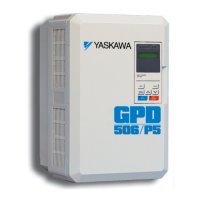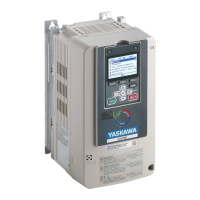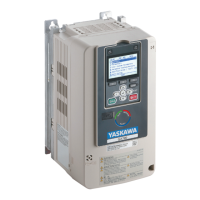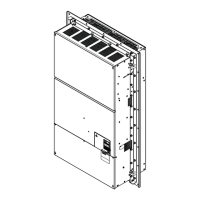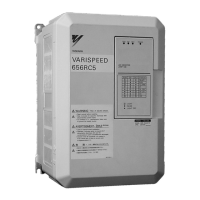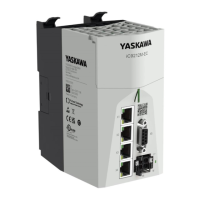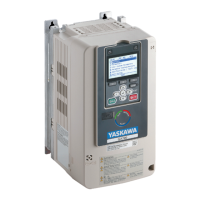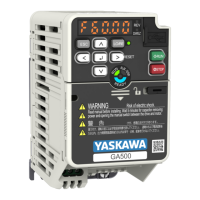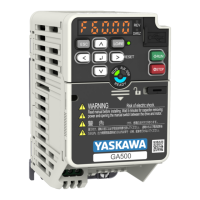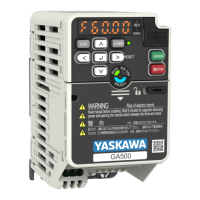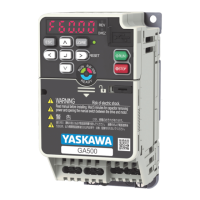12.2 A: Initialization Parameters
634 YASKAWA SIEPC71061705H GA700 Series Technical Manual
Function Precautions
Auto-Tuning for PM Motors You must set the motor data in the drive to run a PM motor.
• When you use a PM motor recommended by Yaskawa
Input the motor code in E5-01. E5 and other related motor parameters will be automatically set to the optimal values.
• When you use a non-Yaskawa PM motor
Do Auto-Tuning.
– When the motor nameplate or motor test report is available, enter the PM motor parameters directly with PM Motor Parameter
Settings.
– If the motor nameplate or motor test report is not available, and the motor cannot rotate, do PM Stationary Auto-Tuning.
– If the motor nameplate or motor test report is not available, and the motor can rotate, do PM Rotational Auto-Tuning.
– When you replace an encoder, make sure that the motor can rotate and do Z Pulse Offset Tuning or PM Rotational Auto-
Tuning.
Note:
• Use in Closed Loop Vector Control for PM control method.
• When you do Auto-Tuning or replace the encoder, make sure that the motor can rotate.
• Set the Encoder Z-Pulse Offset.
• Refer to Closed Loop Vector Control for induction motors for information about the signal to use and the adjustment method.
Braking Resistor Overheat Protection
When you use a braking resistor other than the optional Yaskawa braking resistor unit (LKEB-series), this function uses the thermal
overload relay to detect braking resistor overheat. Load a sequence program that cuts the drive input power supply when the braking
resistor overheats.
*1
Continuous Operation Do not use the momentary power loss continuous operation function and the Auto Restart function. If you use these functions, there
is a risk that the motor will coast to a stop if the brake is open when there is a momentary power loss and the drive is operating or if
there is a fault.
Set the these parameters:
• L2-01 = 0 [Power Loss Ride Through Select = Disabled]
• L5-01 = 0 [Number of Auto-Restart Attempts = 0]
Torque Limit The motor rated torque sets the value for L7-01 to L7-04 [Torque Limit]. If there will not be sufficient torque during start up, replace
the drive with a larger capacity drive and set the torque limit between 200% and 300%. The L7-01 to L7-04 default setting is 200%.
Input/Output Phase Loss Protection,
Overtorque Detection
To stop a fall because of phase loss, set these parameters:
• L8-05 = 1 [Input Phase Loss Protection Sel = Enabled]
• L8-07 = 1 [Output Phase Loss Protection Sel = Fault when One Phase is Lost]
• L6-01, L6-04 = 1 to 8 [Torque Detection Selection 1/2 = oL @ Speed Agree - Alarm only to UL @ RUN - Fault]
• L6-02, L6-05 [Torque Detection Level 1/2]
• L6-03, L6-06 [Torque Detection Time 1/2]
Note:
Use precautions, for example fall detection, on the machine side.
External Baseblock Command
• If you enter the external baseblock signal set in H1-01 to H1-08 = 8 or 9 [Terminal S1 to S8 Function Selection = Baseblock
Command] during run, the motor immediately coasts to stop. When you enter a baseblock command while the motor is operating,
make sure that it is necessary.
• When you use an external baseblock command for the fast stop and operation start up interlocks, load the sequence to lock the
holding brake when you enter the external baseblock command.
• If you enter the external baseblock command and then immediately remove it, the drive will not output the voltage in the time set
in L2-03 [Minimum Baseblock Time]. Do not use an external baseblock command for applications that have frequent Run/Stop
commands.
Acceleration and Deceleration Times If you set the acceleration and deceleration times for the drive side too short and you do not add the mechanical operation delay time
of the holding brake, the holding brake could operate late, or there could be overcurrent at start up, the brake could grind, or the
motor could roll back when it stops. In these conditions, use Dwell Reference at Start/Time and DC Injection Braking at Stop to
adjust the holding brake timing.
Electromagnetic Contactor on the Drive
Output Side
Usually you must not install the electromagnetic contactor between the drive and motor. When you must install an electromagnetic
contactor to use one drive to switchover more than one motor, follow these precautions:
• Load a sequence that opens and closes the electromagnetic contactor when these two conditions are satisfied at the same time,
unless there is an emergency:
– The holding brake is fully closed
– The drive terminals set for H2-xx = 8 or 1B [MFDO Function Selection = During Baseblock] are activated
• If you open and close the electromagnetic contactor during motor control or during DC Injection Braking (or zero speed control),
the surge voltage and the motor direct input current can cause the drive to detect faults.
• When you use an electromagnetic contactor between the drive and motor, set L8-07 = 1 or 2 [Output Phase Loss Protection Sel =
Fault when One Phase is Lost, Fault when Two Phases are Lost].
*1 Refer to page Standard Connection Diagram on page 65 when you load the sequence circuit.
Adjustments Relating to Control
When there is oscillation, rollback, or other control problems, adjust the parameters as specified by the control
method.
V/f Control and Closed Loop V/f Control on page 634 shows only the frequently adjusted parameters.
Note:
Torque and speed response for high-resistance and high-slip motors are slow. Adjust the torque and speed response to increase them.
Low impedance (low-slip) motors will hunt and oscillate. Adjust the torque and speed response to increase them.
V/f Control and Closed Loop V/f Control
While in V/f Control, do not use C3-01 [Slip Compensation Gain].
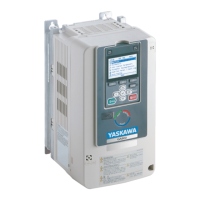
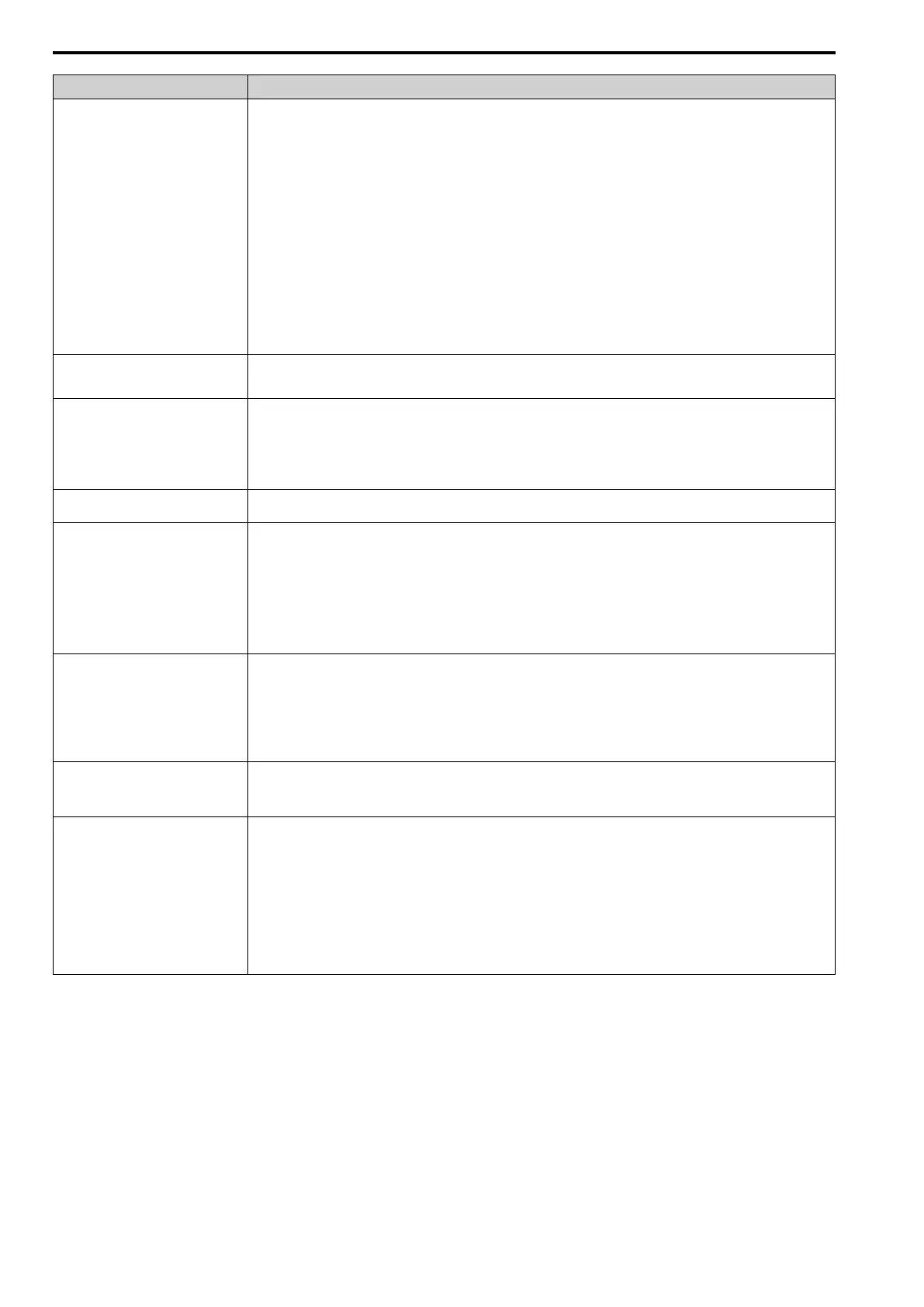